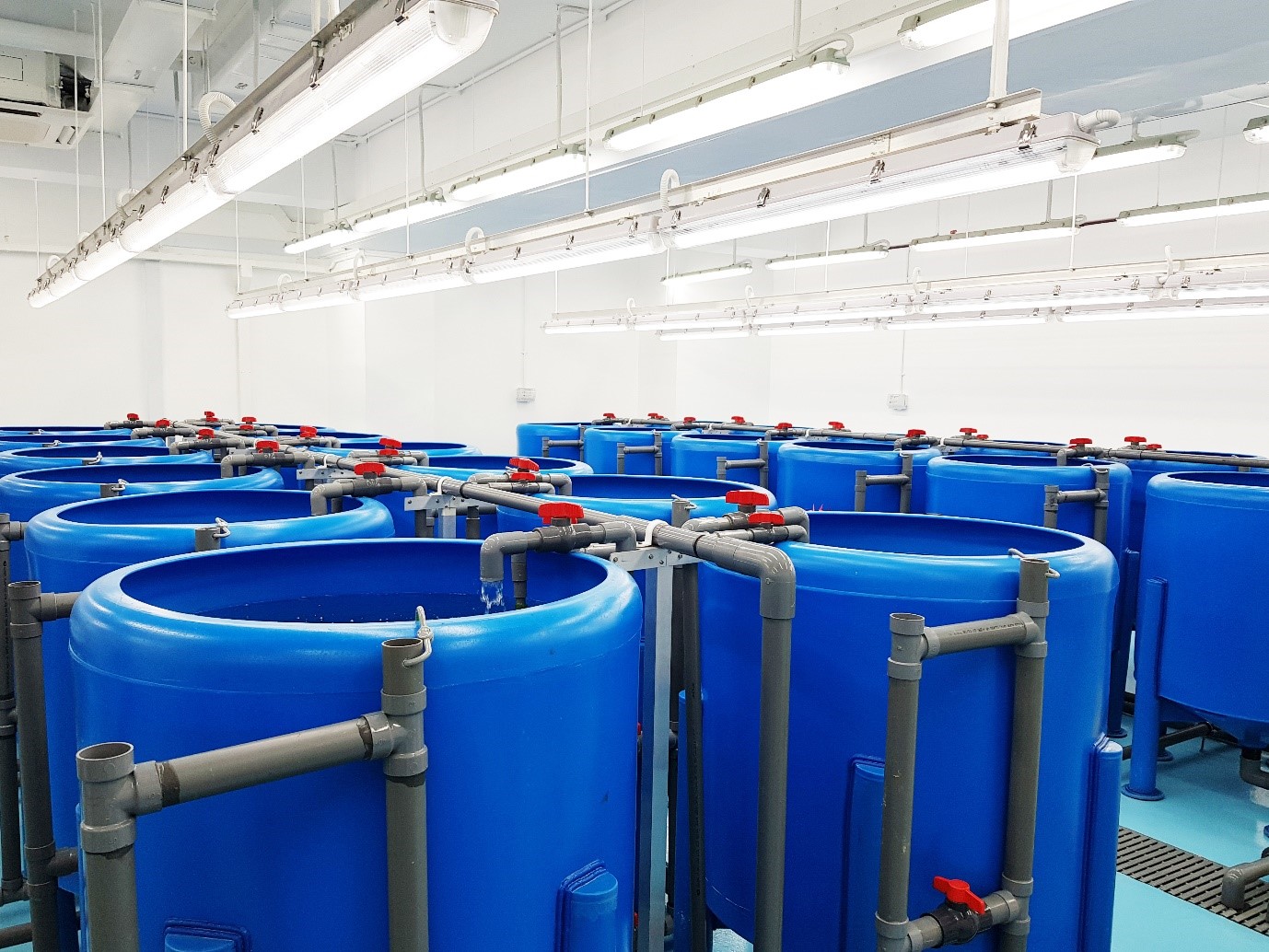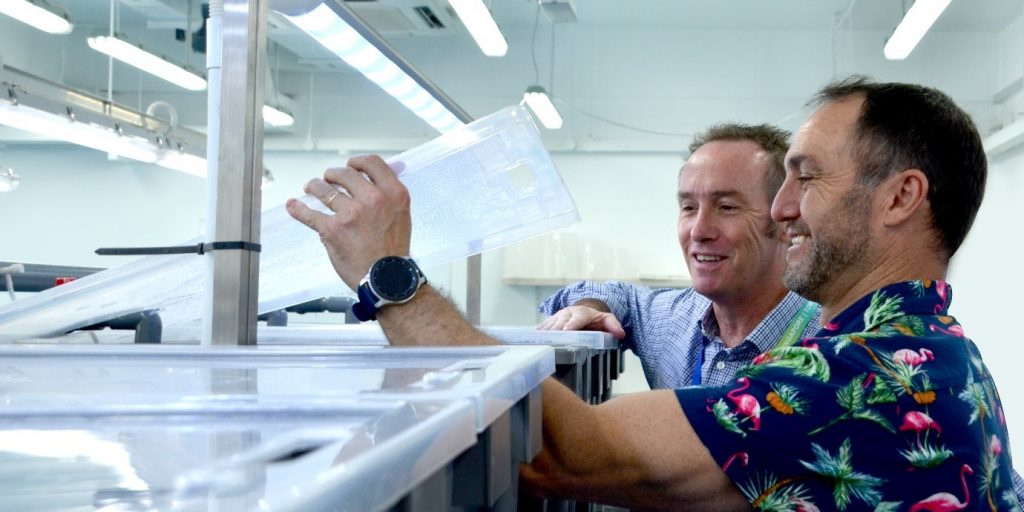People are eating more fish than ever before.
Globally, consumption of fish as food per capita grew from 9.0 kg in 1961 to 20.2 kg in 2015, at an average rate of about 1.5 per cent per year. However, the world is not catching that much more wild fish than it did in the 1980s1.
Aquaculture is responsible for this positive disparity, and will become increasingly important as we work towards achieving our food security goals.
James Cook University (JCU)’s aquaculture expertise reinforces its role as a critical component of the broader research and development ecosystem in Singapore. In fact, James Cook University is globally recognised for its strengths in aquaculture R&D, training and advisory services2.
This enables JCU to lend its skills and knowledge in support of Singapore’s “30 by 30” strategy – which aims to increase the nation’s food production levels from 10 per cent to 30 per cent of total food needs by 2030.
Currently, Singapore imports 90 per cent of its food supply. If this does not change, there could be severe repercussions on the nation’s nutritional needs.
Professor Dean Jerry, Dean of Research for the Singapore campus of James Cook University, commented on this situation, “For a country like Singapore that is so dependent on imports as its food supply, trade embargoes and geopolitical manoeuvring may impact on the ability of nations to import food in the future. It is thus extremely important that the country builds a buffer and has a degree of resilience to any perturbations in its food supply in the future.”
He adds, “The way it can do this is to foster local production and/or alternative forms of food and protein generation, along with helping establish new trading partnerships. Aquaculture is the ideal industry to foster to help meet Singapore’s food security goals.”
Leading aquaculture research & development
At James Cook University, aquaculture is critical to our efforts in preparing for the future, as well as improving the wellbeing of people, communities and the environment.
Due to our investment in this field, we have highly-skilled scientists and researchers alongside cutting-edge tools and facilities at our disposal, which can add great value to Singapore’s aquaculture R&D ecosystem.

In particular, the Aquaculture Research and Teaching Facility – which launched in the Singapore campus of JCU this year – allows us to expand our understanding of aquatic life and identify more efficient methods of aquaculture production.
Additionally, JCU established a research institute on 27 September 2018 – the Tropical Futures Institute (TFI) – which takes advantage of the university’s research capability and strength, and helps to deliver world-class research in the region. Notably, the first research pillar of the Tropical Futures Institute is focused on sustainable production of aquaculture species.
Furthermore, Professor Jerry underscores the human element behind the university’s aquaculture efforts: “JCU has experts covering all the major pillars of aquaculture research and development needs, and can reach back into our Australian capabilities where we have one of the largest teams globally working across all areas of tropical aquaculture that can provide world-class multidisciplinary focused solutions for the local aquaculture industry.”
Challenges in aquaculture
Dr Katheline Hua, Associate Professor and Principal Research Fellow in Aquaculture at James Cook University, points out that one of the biggest challenges facing aquaculture is “the price and availability of feeds”.
She elaborates, “Currently about 70% of aquaculture production depends on formulated aquaculture feeds. Historically, fish meal has been the primary protein source in aquaculture feeds. However, the demand of fish meal produced from wild fish is unsustainable.”
At the moment, a variety of plant protein ingredients and animal by-products have been used as alternative protein sources in aquaculture feeds. That said, they may place stress on agriculture land and water resources.
Dr Hua emphasises that “innovative alternative protein sources are therefore urgently required for the continued growth of aquaculture,” which may include fishery and aquaculture by-products, insect meals, bacterial biomass, yeast and microalgae, seaweed, or even food wastes.
JCU takes a multidisciplinary approach when it comes to tackling such industry problems, bringing different proficiencies together to understand and solve the issue in a more comprehensive manner.
Overcoming obstacles together
To truly support the nation’s food security goals, James Cook University is also committed to partnering with other innovative companies and institutions.
For example, JCU is an important part of the nine institutions supporting the Aquaculture Innovation Centre (AIC). This allows JCU to share our vast knowledge and experience in aquaculture, particularly in the application of genetics to improve the productivity of aquatic organisms.
These efforts are crucial in addressing the challenges faced by the world, which include sustainable food production and food security. Therefore, it is our responsibility to follow through on our bold commitments and create positive change.
1 Food and Agriculture Organization of the United Nations. The State of World Fisheries and Aquaculture 2018 (SOFIA): http://www.fao.org/3/I9540EN/i9540en.pdf
2 E.g., https://www.sfa.gov.sg/docs/default-source/publication/annual-report/ava-ar-2017-18.pdf
For find out more about our Aquaculture Research and Teaching Facility, visit http://bit.ly/30jrzMQ
or scan the QR code below


